Title : Epidemiological profile and factors prognostic disease of meningitis community in children in the region of Beni-Mellal Khenifra, Morocco, 2012-2023
Abstract:
Introduction: Community meningitis (CM) in children is a diagnostic, therapeutic and prophylactic emergency. It is still a topical issue. The aim of this study was to investigate the epidemiological, clinical and biological profile, prognostic factors and trends in morbidity and mortality of CM in children in the BMK region.
Methods: This is a retrospective cohort study adopting a quantitative approach, including children under 18 years of age with CD from investigation forms and CSF registers from 2012 to 2023.
Results: Our study population consisted of 595 patients with a M/F sex ratio of 1.4, a median age of 6 years and 69.24% under 10 years of age. The main symptom was fever in 93.78% of cases. The main symptom was fever, and more than 50% had fever in 93.78% of cases. The meningeal syndrome was noted in 32.77% of cases. The average incidence was 5.78 per 100,000 children<18 years, with a downward trend but finally increasing in recent years, during which time the case fatality rate rose to an unusual level (29%). The average incidence after the Covid-19 pandemic was 75.20% lower than before the pandemic. The notion of antibiotic therapy prior to lumbar puncture was 39.16%. Over 90% of close contacts had received chemoprophylaxis and vaccination without confirmation of the causative germ. Gram staining was negative in 82.53% of cases, and culture was negative in 91.92% of cases. The rate of bacteriological confirmation was 9.41%. N. meningitidis was the most common germ identified (58.9%), and group B was ranked first (44.45%). The case fatality rate during our study period was 8.57%. Three prognostic factors were identified: altered consciousness (adjusted OR=5.17), coma (adjusted OR=9.38) and length of hospital stay (adjusted OR=0.83).
Conclusion: CM in children is a serious public health problem, and the epidemiology of this disease has undergone major changes over time. Ongoing epidemiological and bacteriological surveillance is essential. At the end of this work, we formulated practical recommendations and proposals for opening up the field, focusing on vaccination, medical practice, the laboratory, treatment, chemoprophylaxis and monitoring.



